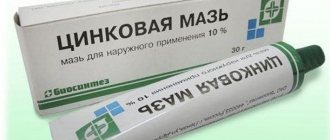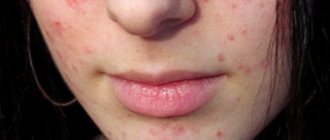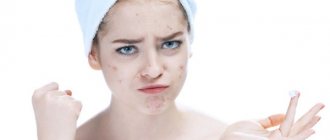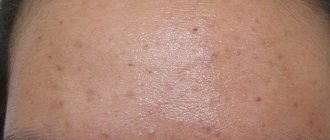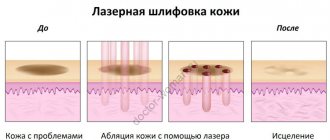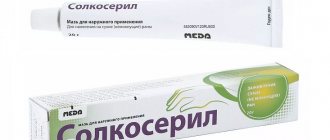- 1149
- 02-09-2021
- Author: Mysekret Team
- 0
Subcutaneous acne on the face is a problem from which no one is immune. It is useless to try to squeeze out such a pimple, since it is “not ripe” for this. Waiting until the right moment comes is also difficult, as redness and unpleasant pain occur.
To get rid of subcutaneous acne, you can use various folk recipes in the form of applying plantain, celandine juice or a compress of herbal decoction. But it’s better to entrust the problem to pharmaceutical products that have been tested and work accurately.
We have collected the top most effective remedies for subcutaneous acne from the pharmacy, which are inexpensive.
Introduction
All over the world, acne (acne) is considered one of the most common diseases. While it is seen by some as a cosmetic defect, there are few diseases that cause so much physical and mental suffering, especially during adolescence. There are usually no problems in making a diagnosis, but there are large discrepancies between causative factors and effective treatments. There are several types of sebaceous follicles: 1. Terminal hair follicles (found in the hair of the beard, eyelashes, eyebrows). With inflammation in their locations, inverse acne develops. 2. Follicles of the vellus glands (vellus hair). Most likely, these glands are not involved in the development of acne. 3. Sebaceous follicles, which are characteristic of humans and are not found among animals. They are localized in the face, neck, shoulders, back, and chest. The sebaceous follicle is the only type of follicle that can transform into acne. The sebaceous glands produce oil, which is used to lubricate the surface of the skin. The secretion of the sebaceous glands first accumulates in the hair sebaceous unit. Next, the secretion of the sebaceous glands is released onto the surface of the skin and, mixing with the lipids of the epidermis, forms sebum. With the onset of androgen hormonal stimulation, around the 7th year of life, the secretion activity of the sebaceous glands increases. With age, in people over 40 years of age, it decreases, especially in women during menopause. Sebum secretion follows a circadian rhythm, rising in the morning and decreasing in the evening. The composition of sebum includes free and bound fatty acids; triglycerides, metabolites of steroid hormones, squalene, cholesterol, wax esters, phospholipids, and carotene are found in small quantities. Sebum secretion is regulated by neurogenic (autonomic nervous system) and humoral (hormonal regulation) mechanisms. Stimulate sebum secretion: adrenocorticotropic hormone, adrenal hormones, androgens. Estrogens suppress sebum secretion. There is a condition called SEBORRHEA
- a painful skin condition associated with excess production of sebum by the sebaceous glands with an altered chemical composition. There is an undeniable connection between seborrhea and acne. But hypersecretion of sebum is not enough to explain the development of acne, since hyperseborrhea can be observed without acne. However, acne is always accompanied by hyperseborrhea, and the more sebum the sebaceous glands produce, the more severe the acne. Pathological changes in seborrhea are associated with quantitative and qualitative changes in sebum. With increased sebum production in areas rich in sebaceous glands, the skin usually becomes very shiny and becomes covered with a sebaceous film. The shine of this sebaceous-sweat film cosmetically disrupts the appearance of the face. With seborrhea, the composition of sebum changes significantly. Compared to healthy individuals, patients with seborrhea experience an increase in androgens in sebum and a decrease in estrogens. With seborrhea, the concentration of linoleic acid in sebum decreases, which leads to an increase in skin pH, changes in epithelial permeability, and the growth of microorganisms on the surface of the skin.
How to choose the right ointment for acne
When purchasing an effective remedy for acne on the face, you need to pay attention to:
- Skin type – drying medications are used for oily skin types, and are completely unsuitable for dry skin types. Emollients are suitable for those who are sensitive.
- Expiration date - if there is a month left until the end of the date, it is better not to take such an anti-acne ointment, it is already less effective. Buy the product at a pharmacy that can withstand humidity and the required temperatures. Expired ointment will lead to skin pathologies.
- Certificate of quality - if you have doubts about the caring gel or cream you are purchasing, you can request a document.
- It is better not to buy ointment manufacturers – it is better not to buy little-known products, but to give preference to those brought from Italy, Switzerland, and France.
Gels and ointments must combat the acne factor, otherwise some acne will disappear and new ones will appear.
Vulgar acne
One of the most common skin diseases, affecting up to 85% of people aged 12 to 25 years and 11% of people over 25 years of age. Acne can lead to disfigurement and permanent scarring. But even mild cases cause significant emotional distress and have serious psychosocial consequences. Acne is a disease of the hair follicles and sebaceous glands. Four interrelated factors are important in pathogenesis: 1. Pathological follicular hyperkeratosis
– this is a violation of the processes of keratinization, which leads to blockage of the follicular duct by horny scales and the formation of a comedon (black head).
Subsequently, closed comedones turn into inflammatory papulopustular elements and transform into open comedones. In closed comedones, the drainage of sebum and waste products of Propionibacterium acnes is completely blocked. The created oxygen-free conditions are an optimal environment for the rapid proliferation of microorganisms. 2. Excessive formation of sebaceous gland secretion
, which is a substrate for the proliferation of P.acnes, and also leads to pronounced cosmetic defects due to the formation of deep sebaceous cysts (atheromas).
3. Microbial colonization
, in particular the proliferation of P. acnes.
4. Inflammation and immune response
. Acne is not a primarily immune disorder. P.acnes causes inflammation in the dermis (deep layers of the skin), and the epithelium (surface layers of the skin) is damaged by proteolytic enzymes. First, migration of lymphocytes occurs at the site of inflammation. Neutrophilic leukocytes penetrate the lesion and it is they who contribute to even greater damage to the follicle epithelium as a result of lytic enzymes. Highly active radicals (oxygen free radicals, hydroxyl groups, hydrogen peroxide superoxides) accumulate in the dermis, which further damage cells and support inflammation. Inflammation develops at any stage of acne. Today there is no single classification of acne. Existing classifications of acne are based on the clinical picture of the disease or on an assessment of its severity. The most successful is the etiopathogenetic classification. In this review, it is presented with the aim of expanding the understanding of this problem, which will allow us to determine the significance of the disease and optimize the creation of drugs for local and systemic use for the above-mentioned disease.
What retinoids to use for acne
Having understood how retinol works for acne, the question arises: what form of retinol is best to use to treat acne?
To answer this question, you need to understand:
- When treating acne, the goal is not to activate fibroblasts and basal keratinocytes to stimulate cellular renewal and synthesis of the dermal matrix.
- With acne, skin barriers are often compromised. Therefore, the requirement for the selected Retinoid is to minimize aggression and eliminate irritating effects that could provoke the client’s desire to refuse therapy.
Irritation from retinol
Conclusion
At the beginning of therapy, give preference to atraumatic forms of Retinoids without affecting RAR receptors (fibroblasts and basal keratinocytes). Pure retinol and retinol acetate are excluded from acne therapy, especially in the initial stages of treatment.
Acne classification
A
.
Constitutional acne 1. Seborrheic acne in childhood adolescence and adolescence: - acne of newborns - acne of infants - juvenile acne 2. Late acne: - premenstrual acne - postmenstrual acne - late hyperandrogenic acne in women - conglobate cystic acne in
men
B. Provoked acne 1. Artificial acne (mechanical, traumatic) 2. Oil acne (including professional acne) 3. Cosmetic (can be considered as a contact variant, usually found in women 20-30 years of age who abuse cosmetics). 4. Excoriated (In most cases, it manifests itself in a mild form. Each new rash is squeezed out, scratched or processed with some instrument. A smooth transition of this acne into a disease with abnormal neurotic behavior is possible. Some authors distinguish three degrees of severity of acne: mild form acne is diagnosed mainly in the presence of non-inflammatory elements - closed and open comedones. The moderate form is characterized by the presence of papulopustular elements on the face and torso. The severe form is characterized by a large number of papulopustular elements, as well as conglobate and cystic forms of acne. In recent years, acne treatment has been carried out taking into account pathogenetic aspects and therefore has become more targeted. Diet
... Food does not affect the amount and composition of sebum and the processes of keratinization of follicles. However, individual observations of patients should be taken into account.
Psychotherapy
... Patients with acne often suffer from disfiguring facial changes.
Acne is not caused by mental factors. Acne therapy itself is based on effective therapy, and not on psychotherapy. Psychotherapy that accompanies treatment can help in certain situations. Drug treatment
. Local and systemic therapy is used to treat acne. Topical treatment is indicated only for mild to moderate non-inflammatory acne, mild inflammatory acne without scarring, and as adjunctive therapy for moderate to severe acne. The most actively used drugs, both systemic and local, are retinoids. They act on follicular hyperkeratosis. Retinoids are universal inhibitors of lipogenesis and sebum secretion, normalize keratinization processes, and reduce the inflammatory response. The most well-known drugs are: tretinoin, airol, differin, isotretinoin, lokatsid, retin-A, clinesfar. An isotretinoin derivative, roaccutane, is used as a systemic drug. In addition to retinoids, you can influence excess sebum production with the help of antiandrogenic substances. Most are oral medications. The most famous are: Androcur, Diane-35, spironolactone. The latter can be used in 3-5% concentration, but it, as a rule, has a weak therapeutic effect. Microbial colonization of the follicle is affected by antibiotics and antiseptics, which are used both as local agents and internally. The most commonly used are tetracycline, erythromycin, and clindamycin. One of the options for local anti-inflammatory treatment of acne is curiosin gel. It contains natural components - hyaluronic acid, zinc, substances that are part of many tissues of the human body, primarily the skin. The drug is recommended by manufacturers for the treatment of any form of acne, however, as a result of long-term observations of the practical use of the gel, a lack of clinical effectiveness in its use has been established. In addition to specific local and systemic drugs that affect the pathogenesis of acne, patients often require additional measures (adjuvant therapy).
Pharmacotherapy of acne
Acne vulgaris is a chronic multifactorial disease of the hair follicles and sebaceous glands. 80% of patients aged 12 to 25 years and approximately 30–40% of patients over 25 years of age are affected by acne vulgaris.
Initial morphological changes in acne are associated with disruption of the processes of keratinization at the mouth of the hair follicle and the formation of microcomedones, which clog the excretory duct of the sebaceous gland of the hair follicle. The anaerobic conditions created as a result are optimal for the rapid growth and reproduction of Propionibacterium acnes, the vital activity of which is associated with the formation of inflammatory elements of acne. As a result of chronic inflammation, persistent dyschromia and scars form in place of resolved acne elements.
Sex hormones play a significant role in the mechanism of acne formation.
Human skin is a complex of androgen-sensitive structures (sebaceous and sweat glands, hair follicles). The first clinical signs of acne appear during puberty against the background of hyperactive gonads. Acne often occurs in women due to long-term use of androgens for various endocrine diseases, anabolic steroids and contraceptive drugs. The authors of one of the theories of the occurrence of acne vulgaris place hereditary predisposition at the forefront.
Various exo- and endogenous factors can aggravate acne: occupational hazards, cosmetics, prolonged exposure to sunlight.
The classification proposed by G. Plewig, A. Kligman (1991) is as follows.
- Neonatal acne.
- Infantile acne: acne conglobata of infants.
- Juvenile acne: comedonal, papulopustular, conglobate, indurative, phlegmonous-necrotic, keloid, hard persistent facial swelling with acne, mechanical.
- Adult acne: localized on the back; tropical; post-juvenile acne in women; postmenopausal; testosterone-induced acne fulminans in extremely tall male adolescents, androgen excess in men, doping.
- Contact acne: cosmetic; acne on lipstick; chloracne; oily and tarry acne.
- Comedonal acne due to exposure to physical factors: single comedones (Favre-Rakucho disease); solar; Mallorca-acne; acne vulgaris as a result of ionizing radiation.
The following clinical forms of acne are distinguished:
- non-inflammatory (open and closed comedones; milia);
- inflammatory (superficial papules and pustules; deep indurative, conglobate; complicated abscess, phlegmonous, fulminant, acne-keloid, scarring).
The severity of the disease is assessed based on the count of rashes on one side of the face; classified according to gradation and severity. Gradation I - the number of comedones is less than 10; II - 10–25; III - 26–50; IV - more than 50. Degree I - the number of papulopustules is less than 10; II - 10–20; III - 21–30; IV - more than 30.
Papular acne is an inflammatory infiltrate at the base of comedones, resulting in the formation of a small bright red nodule that slightly rises above the skin level.
Pustular acne occurs in place of papular acne, the inflammatory infiltrate increases, and a cavity with purulent contents appears in the center of the nodules.
Indurative acne is formed as a result of a powerful infiltrate around inflamed hair follicles, reaching the size of a bean. They usually leave disfiguring scars.
Phlegmonous acne is formed as a result of the fusion of large pustules, deep-lying and quickly maturing, prone to abscess formation. They are purplish-red in color and reach the size of a plum.
Conglobate acne - deep abscess infiltrates formed around several comedones and folliculitis, with the formation of large conglomerates. After resolution, keloid scars remain.
The choice of treatment tactics depends on the clinical form of the disease, the severity and duration of the course, tolerability of drugs, the presence of concomitant endocrine and somatic pathologies, age, gender, and psycho-emotional characteristics of the patient.
In complex therapy, much attention is paid to diet. Patients are advised to limit the consumption of animal fats, smoked meats, easily digestible carbohydrates (honey, jam), as well as extractive substances.
Before treatment, it is recommended to conduct a clinical and laboratory examination of the patient to find out the cause of this disease and risk factors.
Mandatory laboratory tests: biochemical blood test (total bilirubin and its fractions, triglycerides, alanine aminotransferase, aspartate aminotransferase, cholesterol, alkaline phosphatase, creatinine, glucose).
Recommended laboratory tests: checking the hormonal profile in women with clinical signs of hyperandrogenemia (follicle-stimulating hormone, luteinizing hormone, free fraction of testosterone, etc.); isolation and identification of microbial flora of the skin with determination of sensitivity to antibiotics; bacteriological study of intestinal flora; general blood analysis.
Local and systemic therapy is used.
External preparations, including keratolytics (comedolytics), sebostatics, anti-inflammatory, antibacterial agents are prescribed as monotherapy for non-inflammatory acne of mild to moderate severity, and for mild inflammatory acne.
It is recommended to wipe the skin with degreasing and disinfecting alcohol solutions with antibiotics (5% chloramphenicol), shaken suspensions with sulfur, ichthyol; resorcinol (2%), salicylic acid (2–5%), camphor (5–10%).
Keratolytics are drugs that normalize the processes of keratinization at the mouth of the follicle and prevent the formation of microcomedones.
Tretinoin (Retin-A) - cream or lotion is evenly applied to the washed and dried surface of the affected skin 1-2 times a day. The course of treatment is 4–6 weeks. Side effects: dryness, hyperemia, swelling, temporary foci of hyper- or hypopigmentation, photosensitivity.
Adapalene (Differin) is a retinoid metabolite. It has an anti-inflammatory effect, has comedolytic activity, normalizes the processes of keratinization and differentiation of the epidermis. 0.1% cream or gel is applied evenly, without rubbing, to the affected areas of dry, clean skin once a day before bedtime. The therapeutic effect develops after 4–8 weeks of therapy, persistent improvement occurs after 3 months from the start of therapy. Side effects include redness and flaking of the skin. Use during pregnancy and breastfeeding is not recommended. Avoid contact with eyes and lips, do not expose to sunlight; It is not recommended to use cosmetic products with a drying or irritating effect (including perfumes, ethanol-containing products). Typically, therapy begins with a gel; for sensitive and dry skin, a cream containing moisturizing components is indicated.
Drugs with antibacterial effects are prescribed for mild to moderate inflammatory forms of acne; for severe forms of acne - as an addition to systemic antibiotic therapy.
Erythromycin ointment (10,000 units/g) is applied 2 times a day. The duration of use should not exceed 5 weeks due to the risk of developing microflora resistance.
Pyolysin is a combined preparation, an ointment for external use, containing a filtrate of the nutrient medium of broth cultures of microorganisms (Escherichia Coli, Pseudomonas aeruginosa, Streptococcus spp., Enterococcus spp., Staphylococcus spp.), preserved with a phenol solution, as well as salicylic acid and zinc oxide. It has an antimicrobial, anti-inflammatory, immunostimulating effect, improves tissue regeneration. The ointment is applied in a thin layer to the affected areas of the skin 1–3 times a day or more often, depending on the patient’s condition. Contraindication is hypersensitivity to salicylates.
Benzoyl peroxide (Baziron AC) - has a wide spectrum of antibacterial and anti-yeast activity without the development of microbial resistance. It has comedolytic and anti-inflammatory effects, improves tissue oxygenation, and suppresses the production of sebum in the sebaceous glands. The gel is applied to a clean and dry surface of the affected skin 1 or 2 times a day.
Zinerit - due to the content of the erythromycin-zinc complex, it has an anti-inflammatory, antibacterial, comedolytic effect. Available in powder form for preparing a solution for external use in combination with a solvent and applicator. Apply a thin layer to the affected area of skin 2 times a day; in the morning (before applying makeup) and in the evening (after washing). The course of treatment is 10–12 weeks. After drying, the solution becomes invisible.
Clindamycin (Dalacin) - 1% gel, apply it in a thin layer 2 times a day. Adverse local reactions manifest themselves in the form of dry skin, redness, itching, peeling, and increased oiliness of the skin. A contraindication is a history of colitis associated with the use of antibiotics.
Azelaic acid (skinoren) - 15% gel, 20% cream. Apply evenly in a thin layer 2 times a day to previously cleansed (with mild cleansers and water) areas of the skin of the face and, if necessary, the neck and upper chest affected by acne. Marked improvement is usually observed after 4 weeks. Local adverse reactions in the form of burning, tingling, redness disappear on their own within 15 minutes. In cases of severe skin irritation in the first weeks of treatment, the drug can be used once a day.
Zinc hyaluronate (curiosin) is a gel, applied in a thin layer to thoroughly cleansed skin 2 times a day. There may be a feeling of skin tightening and skin hyperemia. Typically, these manifestations disappear on their own with continued therapy. Does not have photosensitizing properties and does not stain skin or linens.
Systemic therapy is prescribed for the treatment of patients with moderate to severe forms of acne, especially in the case of scarring, as well as in cases of severe depression associated with mild acne. In addition, such treatment is indicated in the absence of effect from external therapy carried out for 3 months.
Antibiotics (macrolides, tetracyclines) are used for no more than 2–3 weeks.
If antibacterial therapy is ineffective or the disease progresses torpidly, the synthetic retinoid isotretinoin (Roaccutane) is recommended - the daily dose is 0.5–1.0 mg per 1 kg of body weight, should not exceed 60–80 mg/day, capsules taken with meals. Contraindicated for pregnant and nursing mothers. Contraception is recommended to be started 1 month before the start of therapy, carried out throughout its entire duration and another 1 month after the end of treatment, since the drug has a teratogenic and embryotoxic effect. It is not recommended to combine with tetracycline antibiotics.
In women of reproductive age in the presence of hormonal disorders and when conventional therapy is ineffective, the use of antiandrogens (Androcur, Diane-35), estrogens (Zhanine) is indicated. Hormonal drugs are prescribed to women with moderate and severe forms of acne after consultation with a gynecologist-ecdocrinologist with subsequent observation.
To reduce the duration of drug therapy, consolidate the positive results of treatment and prolong remission, it is necessary to additionally use a complex of medicinal cosmetics.
Proper cleansing of the skin is one of the mandatory steps in getting rid of acne.
Cleansing gel "Clinance" (Aven laboratory, Pierre Fabre Dermo-Cosmetic, France) gently cleanses acne-prone skin without disturbing the hydrolipidic film. Wash off with water.
Regulating cream "Diakneal" affects all parts of the pathogenesis of acne due to a unique combination of retinaldehyde and glycolic acid. Evens out the skin texture and prevents the formation of scars. Apply 1 time in the evening to dry, cleansed skin. Can be used from the age of 15.
Sebum-regulating, keratore-regulating cream “Cleans K” softens, evens out the skin, eliminates “black spots” and small inflammatory elements. Can be used from the age of 12. Apply to dry, cleansed skin 1-2 times a day.
During acne treatment, dryness, irritation, and peeling may occur. To eliminate the side effects of therapy, it is recommended to use the moisturizing soothing cream “Klin AK”, which contains thermal water, zinc gluconate, jojoba oil, and shea butter. Apply to cleansed skin in the morning and/or evening.
For daily care of problem skin, as a base for makeup, apply sebum-regulating mattifying emulsion “Cleanans” (colorless and tinted) 1-2 times a day, as well as a two-color corrective pencil “Cleanans” for masking acne, the green part of which has an additional bactericidal and drying effect. action. Apply exactly to acne elements.
The “Exfoliac” series of products (Merck Medicasion Familiar, France) is recommended: “Exfoliac” cleansing gel (for hygiene) and creams (cream 10, which is a basic product for skin care with acne of I–II severity; cream 15 - for daily skin care for acne of III-IV severity).
Preparations from the “Clerasil Ultra” series (Reckitt Benckiser): cleansing lotion, cleansing gel, deep cleansing gel, acne cream - promote good cleaning of skin pores, have anti-inflammatory, antibacterial, comedolytic, sebocidal effects.
Products from the Cetaphil series (Galderma, Switzerland) are a gel for daily cleansing and skin care and lotion, applied 2-3 times a day or as needed. The lotion can be washed off with water or left on the skin.
Preparations from the Zeniac line (Laboratory of Evolutionary Dermatology, France) are intended for oily skin prone to acne. The gradual release system through the use of micro sponges ensures a long-lasting mattifying effect and optimal tolerance of the active substances.
After using a cleansing gel that does not contain soap, a roller pencil for local care, lotion, or cream, the sebaceous sheen disappears, the skin acquires a matte tint, and microcysts, comedones, and acne disappear.
As a care product for acne-prone skin, use “Sfingogel” (Laboratory of Evolutionary Dermatology) - a cleansing gel for washing 1-2 times a day until the rash disappears, for at least 2 months. As a maintenance treatment, it is used once a day in the evening, continuously. It is prescribed both independently, without the addition of traditional medications, and in combination with systemic drugs.
Acne must be differentiated from inflammatory forms (rosacea). In the pathogenesis of rosacea, the leading role is played by vascular disorders caused by the influence of exogenous (alcohol, hot drinks, spices, detection of Demodex folliculorum mites in the skin) and endogenous factors (diseases of the endocrine system, disorders of the immune system, etc.).
The onset of the disease is characterized by liquid erythema, which may be the only clinical sign for many months and years.
Subsequently, infiltration appears in place of the erythema on the skin of the forehead and chin, papules and pustules appear. Due to a long chronic progressive course, the pathological process leads to the formation of inflammatory nodes, infiltrates and tumor-like growths due to progressive hyperplasia of connective tissue and sebaceous glands and to persistent vasodilation.
The rashes are localized on the nose, cheeks, less often on the chin, forehead, and ears.
Treatment depends on the stage of rosacea and includes topical and systemic medications.
Metronidazole is an antiprotozoal drug, used orally, 250 mg 4 times a day for 4-6 weeks (possibly up to 8 weeks) or ornidazole 500 mg 2 times a day for 10 days. Antibiotics (macrolides, tetracyclines) plus cold lotions with 1–2% boric acid and infusions of medicinal herbs are recommended. Apply:
- adapalene, or isotretinoin, or azelaic acid;
- metronidazole - 1% gel or cream - 2 times a day for up to 8 weeks;
- fusidic acid - 2% gel 2 times a day for 3–5 weeks.
Additional treatments. Physiotherapeutic methods accelerate the resolution of inflammatory elements of acne: electrophoresis with a 10-30% ichthyol solution 2-3 times a week, course - 5-10 procedures, or cryotherapy (cryomassage) 2-3 times a week, course - 10 procedures.
Intralesional administration of triamcinolone with 4% gentamicin (1:1 ratio) once a week is the most effective treatment for nodular cystic acne.
Autohemotherapy is recommended for severe forms of acne.
Treatment of secondary post-inflammatory skin changes (hyperpigmentation, pseudoatrophy, scars). Microcrystalline dermabrasion is performed once a week, 5–10 procedures are recommended. Mandatory conditions are: complete relief of the inflammatory process on the skin, protection of the skin from insolation during and for 1 month after treatment.
In addition, superficial chemical peels with alpha-hydroxy acids (30–70%, pH less than 3.5) are performed. Patients with secondary post-inflammatory changes are not recommended to undergo deep skin resurfacing (CO2 laser, erbium laser, dermabrasion), since they often lead to relapse of acne.
A. G. Pashinyan , Doctor of Medical Sciences, Professor of Russian State Medical University, Moscow
Preparations for topical use
Cleansers for certain skin conditions are considered an essential part of the therapeutic plan. In recent years, as a result of chemical synthesis, surfactants called detergents or “syndets” have been obtained, i.e. "synthetic detergents". The fundamental difference between syndets and soaps is that the pH value can be chosen more or less freely. For severe seborrhea, special acne soap is often used, but excessive facial hygiene with frequent washing should be avoided, since overhydration of the follicle leads to the accumulation of sebaceous gland secretions and can cause increased inflammation. Various creams, gels, emulsions, and solutions are used as hygiene and care products for oily skin with a tendency to acne. Shampoos can be divided into cosmetic and medical. Cosmetic shampoos can be liquid, creamy, aerosol, or oil-like. Medical shampoos are used to treat diseases of the scalp and contain antiseptics, active substances, and antifungal agents. For dandruff, the drug of choice is the frequent use of mild detergent shampoos, which are usually used 1-2 times a week. This procedure cleanses the scalp of scales, but in itself does not have a therapeutic effect. Shampoos containing the following components have a beneficial effect (for example: coal tar, ichthyol, piroctone olamine, zinc pyrithione, ciclopiroxalamine, plant extracts, selenium sulfide, AHA, BHA, ketoconazole - an antifungal component). At the multidisciplinary clinic CELT
We take a comprehensive approach to solving problems associated with impaired sebum secretion, using the most modern methods of treating this disease. Remember that self-medication is unsafe, as there is a risk of worsening the problem, therefore, at the first sign of acne, consult a dermatologist! If necessary, the dermatologist will refer you to another specialist (endocrinologist or gynecologist). Our clinic provides excellent laboratory diagnostics, where you can always take hormone tests with a referral from an endocrinologist to prescribe individual treatment. Be healthy, beautiful and cheerful! Make your face a source of pride!
Order cosmetics for problem skin
Gorzdrav is one of the pharmacy chains in St. Petersburg and Leningrad Region, Moscow and Moscow Region.
By collaborating with us, you can order medications for problem skin online and pick them up at the pharmacy that is closest to your home. All cosmetics for problem skin available on our website are made from clean and environmentally friendly raw materials, and therefore rarely cause adverse reactions. It has quality certificates and licenses.
On the Gorzdrav website you can select drugs by active ingredient, find cheaper or more expensive analogues, sort products by decreasing/increasing price or name.
